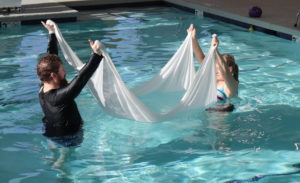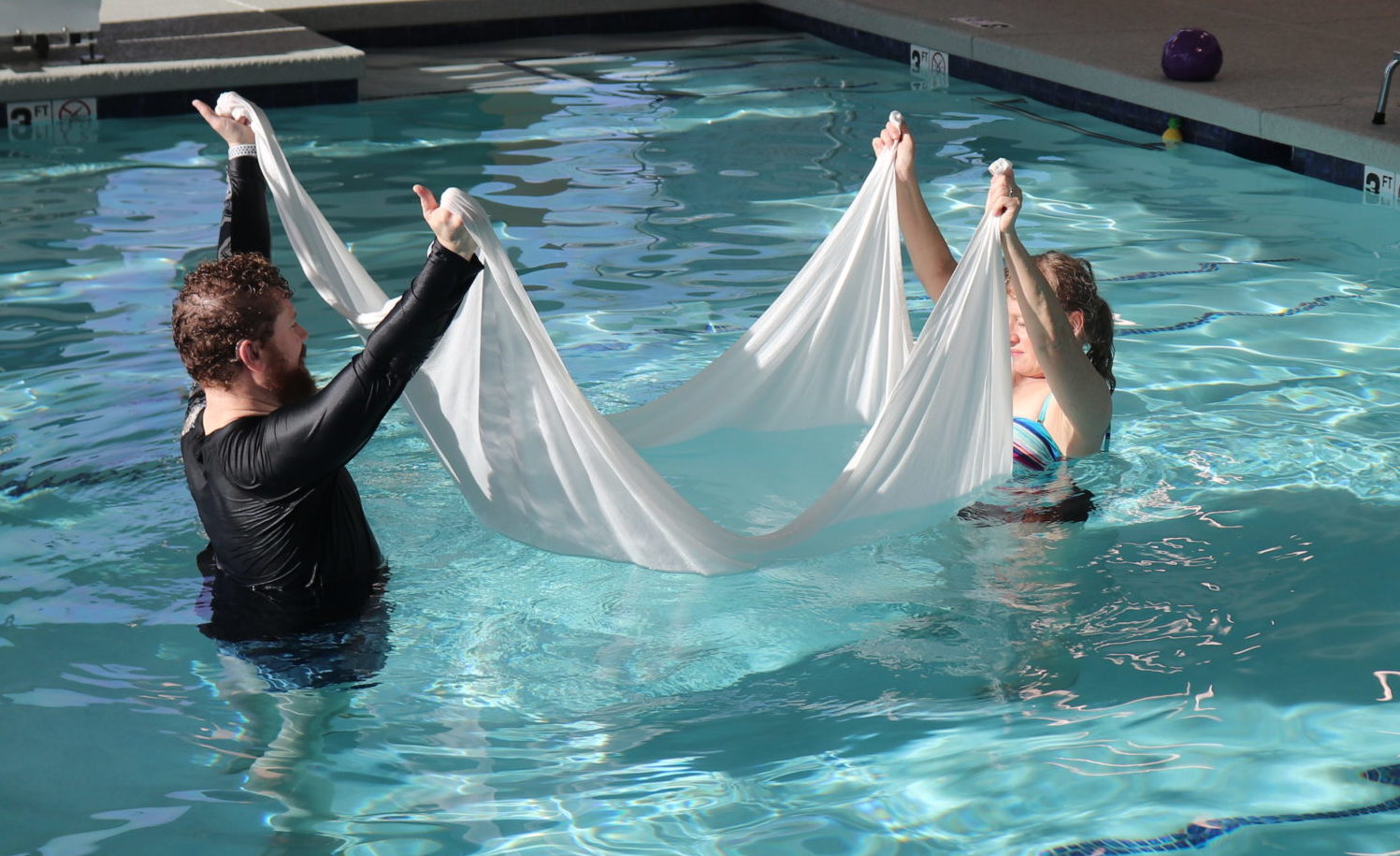What is Aquatic Therapy and How it Helps
by Jordan Ribota, PT, DPT
AzOPT Buckeye Doctor of Physical Therapy
 Aquatic therapy, quite simply put, is using the physical qualities of water (or a pool in most cases) as a form of rehab or exercise. Once your physical therapist and you determine aquatic therapy is best for your goals, you must meet basic criteria such as not being afraid of water and having no open wounds. The ability to swim is not a criteria, our pool is between 3-5 feet deep.
Aquatic therapy, quite simply put, is using the physical qualities of water (or a pool in most cases) as a form of rehab or exercise. Once your physical therapist and you determine aquatic therapy is best for your goals, you must meet basic criteria such as not being afraid of water and having no open wounds. The ability to swim is not a criteria, our pool is between 3-5 feet deep.
How does the pool help me?
There are many ways aquatic therapy can assist you in achieving your goals.
First is BOUYANCY. Standing in water literally takes pressure off of your joints and muscles to help increase your work capacity and assist with balance exercises. With water at waist high, roughly 50% of the body weight is lifted. When the water is at chest high, approximately 80% of your body weight is lifted. We can slowly progress from exercises at 5 feet of depth to 3 feet of depth to increase “intensity” by 30%. Also, with exercise tools such as pool noodles and foam dumb bells, buoyancy can either increase or decrease the exercise’s level of difficulty.
Second is VISCOSITY. This is the resistance of water as the body moves through. Patients can increase the resistance with exercise tools such as paddles. These tools increase surface area in contact with the water which is another tool at our disposal to increase exercise intensity.
Third is THERMODYNAMICS. This comes into play with a heated pool. Heat can transfer from the water and into the muscles and joints. This provides decreased pain and stiffness which will allow the patient to increase their mobility while in the pool. This new mobility will lead to the ability to perform exercises they are not ready to perform on land.
Last property of water is HYDROSTATIC PRESSURE. This is the pressure put onto the body while submerged into a body of water. This pressure on the body can decrease swelling in the upper and mainly the lower extremities. This can lead to increased mobility and decreased stiffness.
Who benefits from aquatic therapy?
Patients who may benefit include but are not limited to those experiencing:
- Joint pain
- Mobility issues
- Balance deficits
- Weight bearing issues
- Sensory and tone issues
- Weakness
- Fatigue
- Those who have failed Land Therapy in the past
If you feel you could benefit from aquatic therapy, please call our Buckeye Clinic to help better yourself and achieve your goals today!







